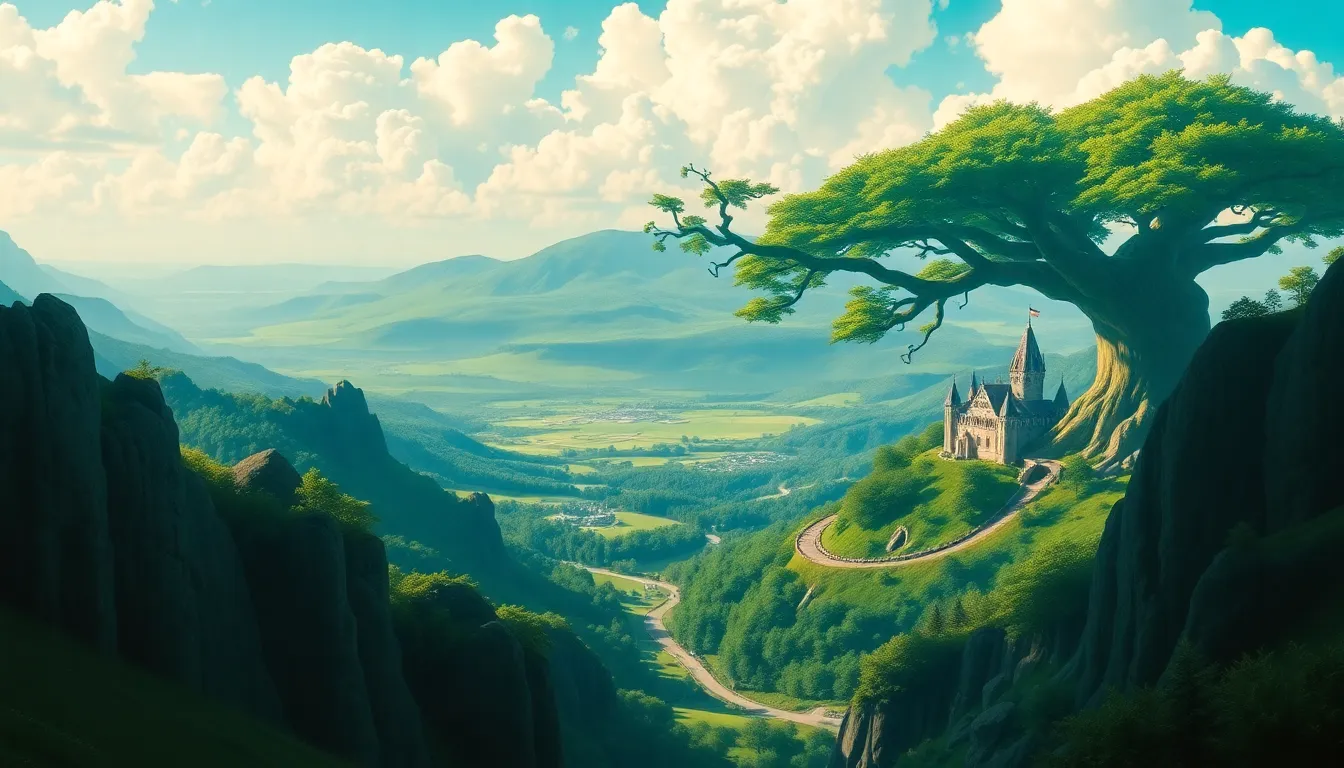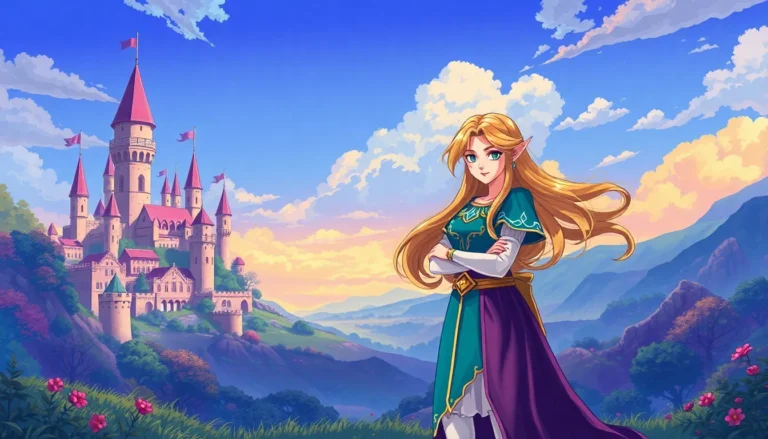In the whimsical world of Hyrule, where princesses get kidnapped more often than groceries get bagged, the lore of Zelda is as rich and tangled as Link’s hair after a long dungeon crawl. Gamers have spent decades unraveling the mysteries of this beloved franchise, but let’s be honest—sometimes it feels like deciphering ancient hieroglyphics while blindfolded.
Table of Contents
ToggleOverview of Zelda Lore
The lore of the Zelda franchise spans multiple timelines and rich narratives. Various titles explore themes of courage, wisdom, and power, often embodied by the legendary Triforce. Players encounter recurring characters like Link, Zelda, and Ganon, each contributing to a web of interconnected stories.
The timeline consists of three main eras, which diverge based on critical events. The first era signifies the creation of Hyrule, while the second era begins with Link’s triumph over Ganon. The third era branches into different timelines, leading to diverse game settings and eras.
Recurring motifs play a significant role in the lore’s depth. Princess Zelda often represents hope and serves as a guide for Link during his quests. The Master Sword symbolizes ultimate courage, while the various incarnations of Link highlight the eternal battle against evil.
Significant events shape Hyrule’s history, such as the Great Flood in “The Legend of Zelda: The Wind Waker.” This event changed the landscape and gave rise to new challenges and adventures. Another crucial moment is the fall of Hyrule in “The Legend of Zelda: Ocarina of Time,” which altered timelines and set the stage for future conflicts.
Fans engage with the lore through theories and discussions, attempting to piece together fragmented stories. Numerous resources, such as books and online forums, further explore the intricate details of each game. The commitment to understanding the lore showcases the dedication gamers possess.
Complex relationships exist within the Zelda universe, expanding narratives with parental bonds and rivalries. Characters like Impa and the various sages amplify the depth of the storytelling, providing insight into the legacy of Hyrule. Each installment enhances the mythos surrounding the franchise, captivating a dedicated fan base.
Major Zelda Games and Their Contributions

The Zelda series features iconic titles that significantly shape its lore. Each game adds layers to the rich tapestry of Hyrule’s history.
The Legend of Zelda: Ocarina of Time
Released in 1998, “Ocarina of Time” introduced a 3D world that transformed gameplay and storytelling. Link’s quest to rescue Princess Zelda and defeat Ganon sets a precedent for future adventures. The game’s innovative use of time travel allows players to witness the evolution of Hyrule across decades. Notable elements include the introduction of the Ocarina, a magical instrument that unlocks essential abilities and narrative paths. Players engage with diverse characters, each contributing to the overarching lore — the Great Deku Tree, Rauru the Sage, and more. This title solidified the franchise’s themes of courage, wisdom, and power, creating a foundation for subsequent narratives.
The Legend of Zelda: Breath of the Wild
“Breath of the Wild,” launched in 2017, redefines exploration within the Zelda universe. It opens up Hyrule’s vast expanse, encouraging players to uncover secrets at their own pace. The storyline revolves around Link awakening from a century-long slumber to defeat Calamity Ganon. Significantly, the game incorporates a non-linear approach, allowing players to tackle challenges in any order. Core mechanics like cooking and crafting enhance gameplay depth and immersion. Discovering the memories of Zelda reveals critical backstory elements and relationships that deepen the player’s understanding of the characters. This installment revitalizes the series while staying true to its legendary roots.
Key Characters in Zelda Lore
The Zelda franchise features a rich tapestry of characters, each crucial to its enduring narratives and deep lore.
Link: The Hero
Devoted to courage, Link stands as the central protagonist in the Zelda series. Every iteration portrays him as a brave warrior, tasked with rescuing Princess Zelda and stopping the malevolent Ganon. Players often become immersed in Link’s journey, equipped with iconic weapons like the Master Sword and the Hylian Shield. Recurrent themes of destiny frame his character, as he battles evil across various timelines and incarnations. Each adventure showcases his growth, ranging from a timid boy in “The Legend of Zelda: The Wind Waker” to a more formidable hero in “Breath of the Wild.” His silent determination exemplifies the heart of heroism in Hyrule.
Princess Zelda: The Triforce Princess
Representing wisdom, Princess Zelda plays a pivotal role in the franchise’s narrative. Her character embodies hope, often guiding Link through perilous quests. Frequently portrayed as resourceful and intelligent, Zelda wields the power of the Triforce of Wisdom. This connection to the Triforce amplifies her importance in Hyrule’s fate. Variations of Zelda inhabit different timelines, each enriching her depth and character arc. For instance, the incarnation in “Ocarina of Time” undergoes significant growth, transforming into Sheik to aid Link. Fans appreciate her resilience and complexity, which highlight the balance of power within the epic lore of Zelda.
The Triforce and Its Significance
The Triforce stands as a central symbol in the Zelda universe. Composed of three golden triangles, it represents the core virtues of courage, wisdom, and power. Each virtue plays a crucial role in shaping the destinies of Hyrule’s characters.
Courage embodies Link’s journey as the hero destined to confront darkness. Throughout his adventures, he demonstrates unwavering bravery against formidable foes, reinforcing the significance of the Triforce of Courage. Wisdom, represented by Princess Zelda, highlights her strategic mind and her guidance in pivotal moments. Her connection to the Triforce of Wisdom showcases her role as a protector and advisor.
Power, depicted by Ganon, reflects the potential for both destruction and control over Hyrule. Ganon’s pursuit of the Triforce of Power drives many conflicts within the series, emphasizing the importance of balance among the three forces. When one character possesses all three Triforce pieces, the potential for wielding enormous influence increases.
The interaction between these three Triforce components frequently affects the fate of Hyrule. In many narratives, a disturbance in this balance leads to catastrophic events, illustrating the delicate nature of power dynamics. Players often witness the results of unbalanced virtue, such as periods of strife or chaos throughout the series.
Many pivotal moments in Zelda lore revolve around the Triforce. Its existence serves as a narrative foundation, connecting characters, events, and alternate timelines. Understanding its significance deepens appreciation for the rich lore that permeates each installment, enhancing the experience for dedicated fans. Engaging with this symbolism fosters a greater connection to the overarching themes and character arcs embedded in the franchise.
Major Themes in Zelda Lore
Courage, wisdom, and power emerge as core themes throughout Zelda lore. These themes manifest through the iconic Triforce, a powerful symbol of the characters’ destinies and relationships. Princess Zelda consistently symbolizes wisdom, often guiding Link on his journey. Link embodies courage, evolving from a hesitant youth to a heroic figure of the realm. Ganon represents power, illustrating the consequences of unchecked ambition and destruction.
Recurring motifs enrich storytelling within the franchise. The Master Sword stands as a testament to ultimate courage, frequently appearing to aid Link in his quests. Princess Zelda’s role as a beacon of hope reinforces the significance of her character in challenging times. Events such as the Great Flood in “The Legend of Zelda: The Wind Waker” represent the transformative trials faced by Hyrule and its inhabitants. Each adventure results in pivotal moments that shape the overarching narrative.
Relationships among characters deepen the lore. The dynamic between Link and Zelda highlights themes of partnership and sacrifice. Rivalries, such as that between Link and Ganon, further complicate the narrative, showcasing differing motivations and consequences. Family ties and mentorship play crucial roles in character development, influencing their paths and decisions.
Exploration of alternate timelines adds complexity to the narrative structure. Each game’s unique setting and events reveal different aspects of Hyrule’s history. Folklore surrounding the creation of Hyrule serves as a backdrop for the ongoing battles and alliances formed throughout the series. Engaging deeply with these themes fosters a richer understanding of each character’s journey and the legacy of the Zelda franchise.
The intricate lore of the Zelda franchise continues to captivate players and fans alike. With its rich narratives and timeless themes of courage, wisdom, and power, Hyrule’s story transcends generations. Each game adds layers to the characters and their relationships, weaving a complex tapestry that invites exploration and discussion.
As players navigate the challenges of understanding this multifaceted universe, they become part of a community dedicated to uncovering its secrets. The enduring appeal of Zelda lies not just in its gameplay but in the depth of its storytelling, ensuring that the adventures of Link and Zelda will resonate for years to come.



